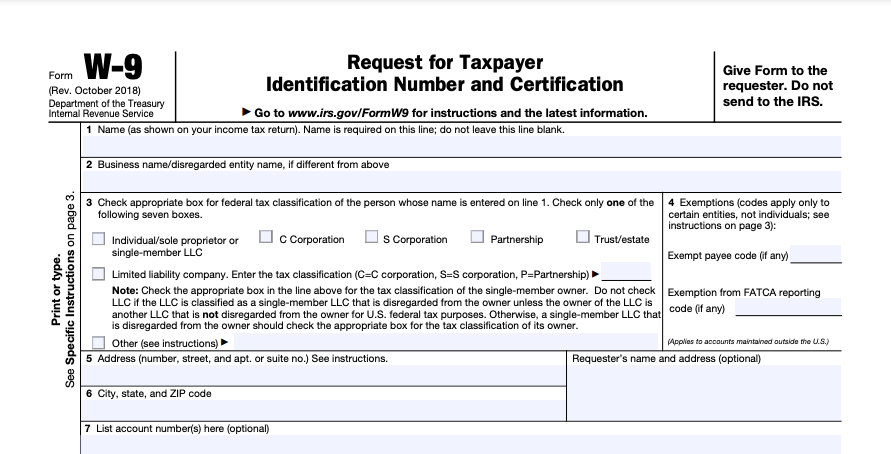This is the United States income tax guide for TikTok creators earning income. We also have a Canadian income tax guide.
Disclosure: This is not official tax advice. Always perform your own research and consult with a CPA/tax expert.
Contents
Do TikTok creators have to pay taxes?
Yes. TikTok creators have to pay taxes on all income associated with being a creator. Income attributable to a TikTok business may include TikTok creator fund income, sponsorship income, merchandise sales, affiliate sales, and/or ad revenue.
Are free products received considered income?
Yes. If you receive free products to promote on your TikTok channel or other social media channels, this can give rise to income. Even though you have not received any cash, you have still received an income inflow and must declare the fair market value of the goods as income. The fair market value is often the price you would have had to pay for the products had you not received them for free.
Does TikTok provide W2s?
No, TikTok does not provide W2s. Your earnings on TikTok are considered business income. TikTok is not considered your employer and is therefore not required to provide you a W2 form.
Is being a TikTok creator (“TikToker”) considered a business?
Yes. As a TikTok creator, you are deemed to be carrying on a business in the eyes of the Internal Revenue Service (IRS). Therefore, you must report all earnings associated with your TikTok business as gross business income. You are then entitled to various deductions to bring down your overall net income for business purposes.
Most TikTokers are deemed to be a sole proprietor unless they otherwise incorporate or set up a different legal structure for their business. As a sole proprietor, you would generally be deemed to earn self-employment income. Self-employment income is taxed under U.S. tax law similar to employment income. However, a sole proprietor may claim deductions for business expenses, generally not available to employees.
Completing Form W-9

When you join TikTok’s creator fund, you will need to complete Form W-9, which provides TikTok the information necessary to pay you and provide tax documents at year-end. As a sole proprietor, you would fill this form out as yourself in your personal capacity. Your social security number (SSN) will serve as your identification – you do not need to obtain an employer identification number (EIN) as a sole proprietor.
See Also: How to Fill Out Form W-9 for TikTok
TikTok Creator Fund Income
TikTok does not withhold U.S. federal income tax on payments – meaning you will receive 100% of your earnings deposited into your bank account with no reduction for tax withholdings, which is the opposite of what happens when you are paid by an employer, who withholds a percentage of your earnings each paycheque. TikTok will issue you a Form 1099-MISC before the end of January of the following calendar year.
Form 1099-MISC confirms to you the total amount of income you’ve received from TikTok, and is also sent to the IRS to allow them to validate your reported income when filing your income tax return. Ensure that this income gets reported to avoid future issues.
Common Business Expenses and Deductions
Since being a TikTok creator is akin to running a business, you are entitled to expenses and deductions incurred in the course of carrying out your TikTok business.
To be deductible, a business expense must be both ordinary and necessary. An ordinary expense is one that is common and accepted in your trade or business. A necessary expense is one that is helpful and appropriate for your trade or business. An expense does not have to be indispensable to be considered necessary.
The Internal Revenue Service
Listed below are some common business expenses that a TikTok creator may incur during the course of their business.
- Business use of home: if you film inside your home, have a dedicated studio space, and/or use your home as a workspace to edit and upload your TikTok videos, you can claim a portion of all of the expenses that contribute to maintaining your house – including property taxes, heat, electricity, insurance, maintenance, and mortgage interest
- Office expenses: any expenses incurred in the course of maintaining the business-side of your TikTok channel are deductible – including pens, printer paper, toner, and business bank account fees
- Internet: the costs you pay to your internet service provider (ISP) are deductible at the percentage used for your TikTok business (ie. 50%)
- Cell phone: your cell phone bill is also deductible at the percentage used for your TikTok business
- Professional fees: any fees associated with experts you’ve hired in the course of your TikTok business, for example, the costs associated with a CPA you’ve hired to help with your taxes, are deductible
- Vehicle & mileage: costs associated with travel via automobile for business purposes are deductible to an extent
- Travel: other travel costs (hotel room, airfare, Uber, car rental) associated with TikTok conferences or other destinations directly relevant to your TikTok business may be deductible
- Data storage & subscriptions: purchases of external hard drives or cloud storage subscriptions are deductible when used for the purpose of storing video footage; additionally, any ongoing subscriptions relevant to your TikTok channel, such as royalty-free music licensing services, are deductible
- Advertising: costs associated with advertising your TikTok channel are deductible, other acceptable costs under this category may include the cost of contests and giveaway prizes
- Software: the purchase of professional video editing software used for TikTok may be completely deductible (may be a capital asset depreciable over time)
Capital Expenses

Some costs must be capitalized, rather than deducted immediately in full. Capitalized costs are deducted from income over time through depreciation or amortization. Things like equipment, furniture, and trademarks are considered capital in nature.
These items will be deducted over a period of time, for example, a new DSLR camera purchase can be deducted at 20% of its original cost for a period of 5 years. The rates and time horizon vary by type of capital expense, so it is important to consult a tax professional on these items.
Recordkeeping
As a sole proprietor, you’re more likely to be subject to an audit, so it’s imperative that you maintain appropriate documents and records (ie. receipts, invoices, contracts) to ensure that you have sufficient proof to substantiate expenses claimed as a deduction for tax purposes. Consider maintaining digital copies of documents and store them in the cloud.
Tax Filing Requirements
You may be familiar with Form 1040, U.S. Individual Income Tax Return. However, as a business owner, you also need to file Schedule C, Profit or Loss from Business (Sole Proprietorship), in which you would report all of your TikTok income and related deductions.

Tax Deadlines
Filing
The deadline for filing your Schedule C with Form 1040 is typically April 15. Extensions are available and can be filed, but you should consult with a professional before doing so.
Paying Taxes
If you owe business taxes, the deadline for paying these taxes is typically March 15.
There are penalties associated with non-payment and insufficient tax payments – so keep on top of deadlines to avoid having to payout additional amounts to the IRS.
Tax Best Practices
- Find a reputable tax accountant and work with them throughout the year to ensure you meet your filing obligations and are prepared come tax season.
- Use an accounting software or find a bookkeeper (virtual bookkeepers are becoming more common) to help you keep your finances in order all year long. This reduces the burden of needing to compile and calculate all of your expenses during tax season.
- Open a separate bank account where income payments are deposited and funds for expenses will be drawn from. This ensures a hard line is drawn between personal and business activities and increases the odds of a favorable audit.
- Calculate your tax bracket based on your estimated annual income. Open a separate bank account (ex. high yield interest savings) and ensure you are putting away a percentage of your earnings each time you are paid, based on your tax rate. The worst position to be in would be finding out in March that you owe taxes and haven’t put away enough to cover the payment.
- Take advantage of technology – use your phone to scan and create copies of all expense documentation.




